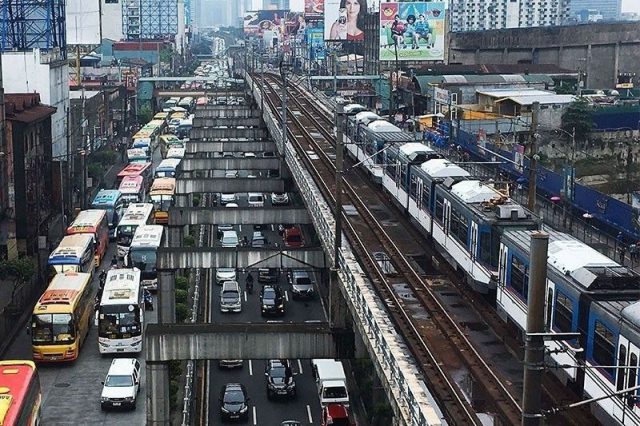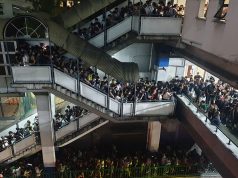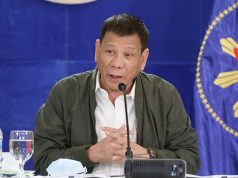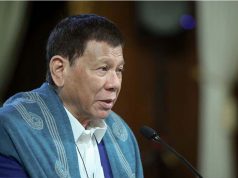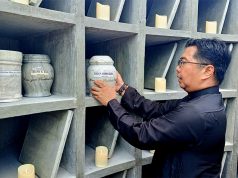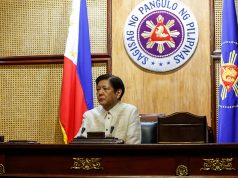Commuters are countering President Rodrigo Duterte’s claim in his final State of the Nation Address (SONA) that traveling using public transportation has already improved in the last five years of his administration thanks to increased infrastructure spending.
“Five years ago, the first thing I made sure of was to increase our infrastructure spending to an average of 5% of the country’s GDP. This is significantly higher than the infrastructure spending of the past four administrations,” the president said.
Duterte then cited the improved Metro Rail Transit 3 (MRT-3) with increased train capacity and speed.
“The waiting time between trains had been significantly reduced…10 trains running at only 30 kilometers per hour before. Now, MRT runs 23 trains at 60 kilometers per hour,” he said.
“We have taken away the misery of public commuting,” he added.
Duterte also touted several infrastructure programs in Metro Manila such as the Light Rail Transit Line 2 East Extension Project and the opening of the third stage of the Metro Manila Skyway.
What was not mentioned, however, was that only 11 out of the 119 Infrastructure Flagship Projects worth ₱126 billion of Duterte’s Build, Build, Build Program have been completed to date, according to data from the National Economic and Development Authority.
Reality on ground
In response to the SONA, Filipino commuters took to Twitter to express their shared experiences while commuting, especially during the pandemic.
“Walang jeep sa karamihan ng mga ruta na jeep ang common PUVs tapos pagmamalaki mo ‘yan,” an online user said.
“Noong nag commute ako nilabag na ng mga tao yung protocols at siniksik yung sarili sa jeep para lang makauwi dahil sa lakas ng ulan at kawalan ng transportasyon. Tapos pinipilit pa ‘yang jeepney modernization dito sa Baguio,” a Twitter user shared.
“The last time I’ve been to Manila I had to wait 3 hours to get into a van that would take me 30 minutes to my destination. So no, the misery has not been “taken away” — in fact, it’s worse,” a different Filipino likewise shared.
I remember na sumakay ako sa may Cubao, tapos mahaba yung pila. [U]ltimo sabihin nating libre na ang bus ride pero halos walang nagbago ganun pa rin,” an online user reported.
“Throughout the pandemic, however, essential workers have had to walk kilometers upon kilometers, and endure long lines due to limited public transport, to get to work and home,” claimed a Twitter user.
“Ang totoong misery, nagtaas ang pamasahe at naging miserable lalo ang buhay namin dahil sa point-to-point na yan. Hindi na kami pwede bumaba sa malapit sa work place, naglalakad kami ng malayo o may extra sakay pa,” a social media user on Twitter stated.
Last month, photos of long queues along the EDSA Busway route also proved the prevailing problems of public transport amid the global health crisis.
LOOK: Long line of commuters at the EDSA Busway in Monumento, Caloocan City this Tuesday morning.
Commuters endure long lines just to get to work everyday. @ABSCBNNews pic.twitter.com/m3U49jq9UV
— Jervis Manahan (@JervisManahan) June 14, 2021
Read: Caught by lens: Long lines, lack of buses, other commuter woes prevail amid COVID-19 pandemic
Because not everyone has a car
Transportation still remains difficult for Filipino commuters due to limited public utility vehicles (PUVs) plying their routes.
The Metropolitan Manila Development Authority said the number coding scheme remains suspended given the “lack of sufficient public mass transportation options for commuters.”
As far back as March, transport groups have called for more PUVs to be allowed to ply their routes once more, with 88 percent of households in the country without cars reliant on public transportation.
Related: MMDA expects the worst in EDSA traffic
According to a Numbeo report, the country has the worst traffic situation among six Southeast Asian countries. The Philippines also ranked ninth among the world’s worst.

